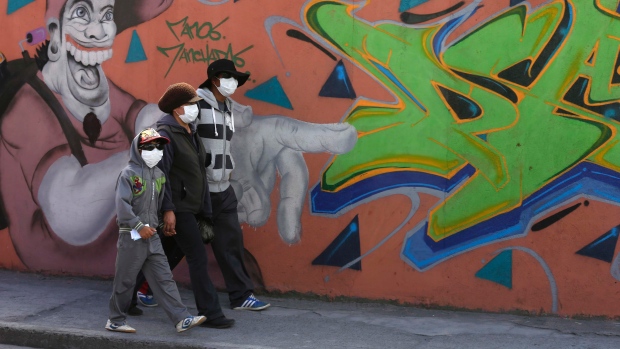-
Tips for becoming a good boxer - November 6, 2020
-
7 expert tips for making your hens night a memorable one - November 6, 2020
-
5 reasons to host your Christmas party on a cruise boat - November 6, 2020
-
What to do when you’re charged with a crime - November 6, 2020
-
Should you get one or multiple dogs? Here’s all you need to know - November 3, 2020
-
A Guide: How to Build Your Very Own Magic Mirror - February 14, 2019
-
Our Top Inspirational Baseball Stars - November 24, 2018
-
Five Tech Tools That Will Help You Turn Your Blog into a Business - November 24, 2018
-
How to Indulge on Vacation without Expanding Your Waist - November 9, 2018
-
5 Strategies for Businesses to Appeal to Today’s Increasingly Mobile-Crazed Customers - November 9, 2018
Volcano in Ecuador spews ash, raises alert level
The volcano greeted locals and tourists with two explosions in the morning that sent ash plumes into the air.
Advertisement
Ecuador’s massive Cotopaxi volcano stirred in the early hours of Friday, with two small explosions reported and ash raining down on the southern part of nearby highland capital Quito.
The British Foreign Office said: “The authorities from Cotopaxi National Park have restricted access to the volcano until further notice”.
Brian Manzano, a hotel receptionist in the town of Machachi, 25km from the volcano, said, “When I got up, I opened the door of the hotel and saw a auto covered in ash”.
The stratovolcano is 45 kilometers (28 miles) from Quito. Its snow-topped symmetrical cone, which rises to almost 6,000 meters (19,685 ft), is visible from the capital on a clear day.
Patricio Ramon of Ecuador’s geophysics institute told Teleamazonas TV that the explosions were small phreatic eruptions, which occur when molten rock, or magma, meets water and produces a violent steam release.
Observers at Ecuador’s Geophysical Institute detected a swarm of earthquakes Thursday, the largest of which had a magnitude of 2.7, which led to minor explosions heard by climbers on Friday.
The last eruption took place in 1940, according to the Smithsonian Institution’s Global Volcanism Program.
Advertisement
The volcano is prone to flows of volcanic rock and mud and it sits next to a heavily populated area.




























